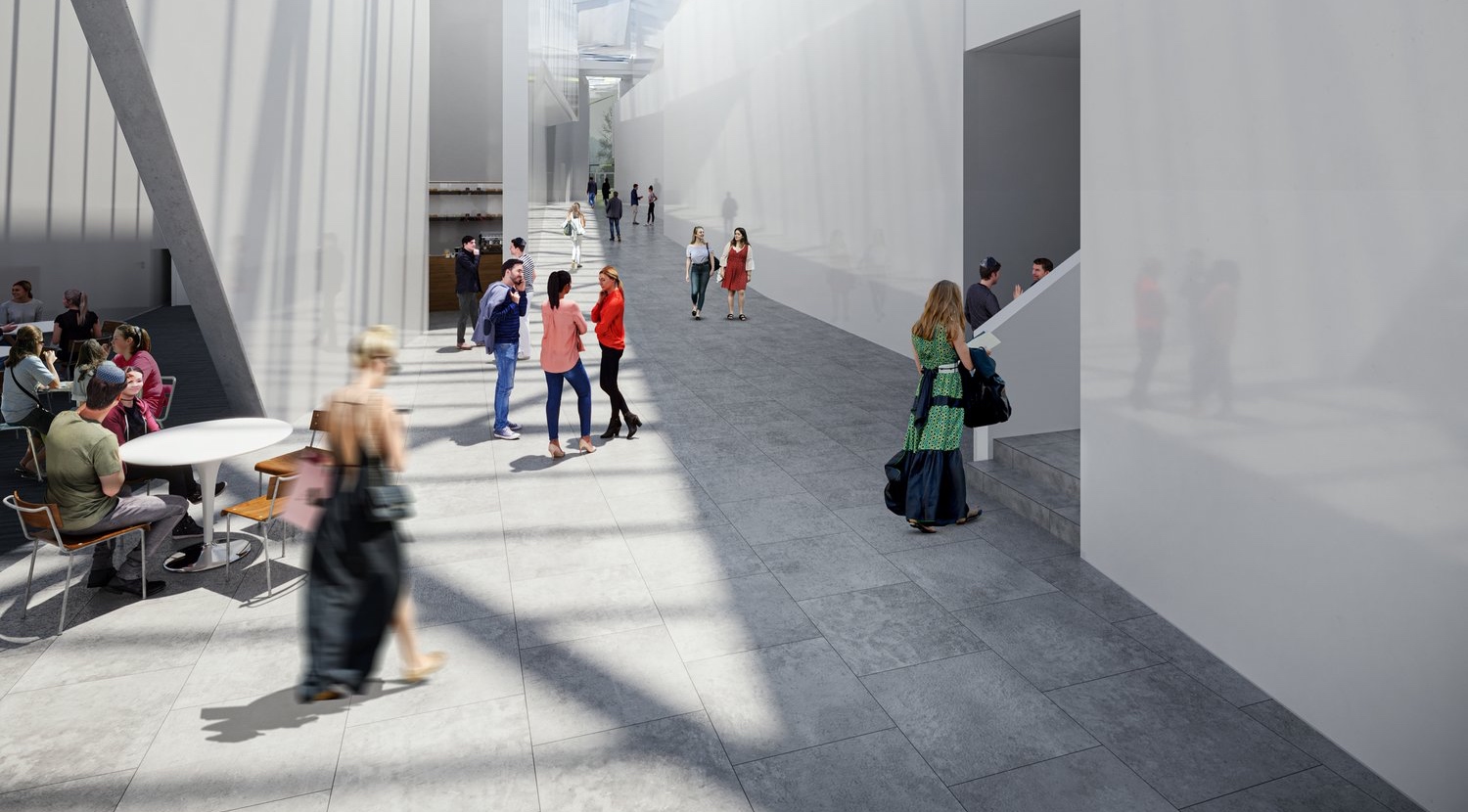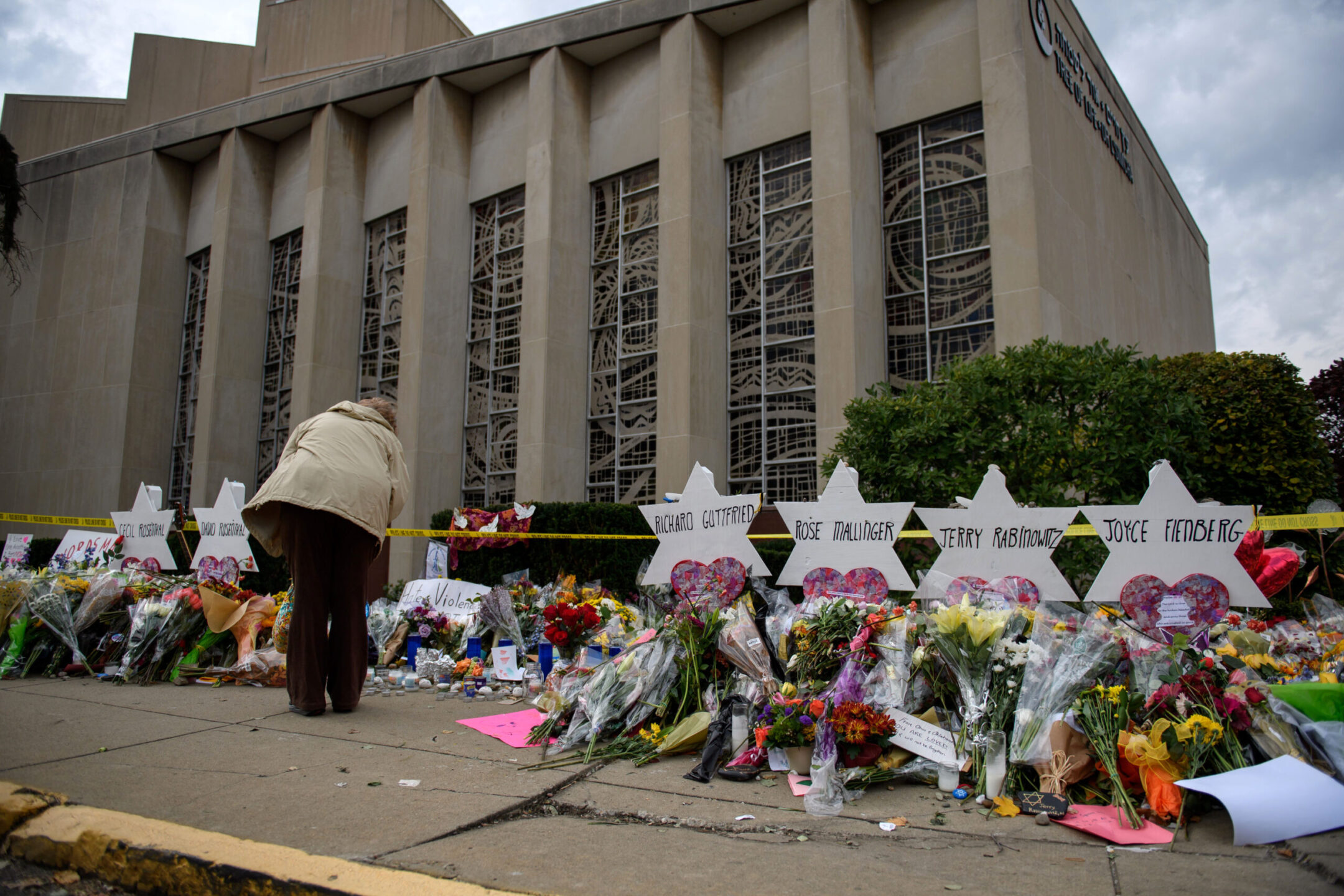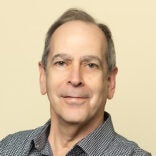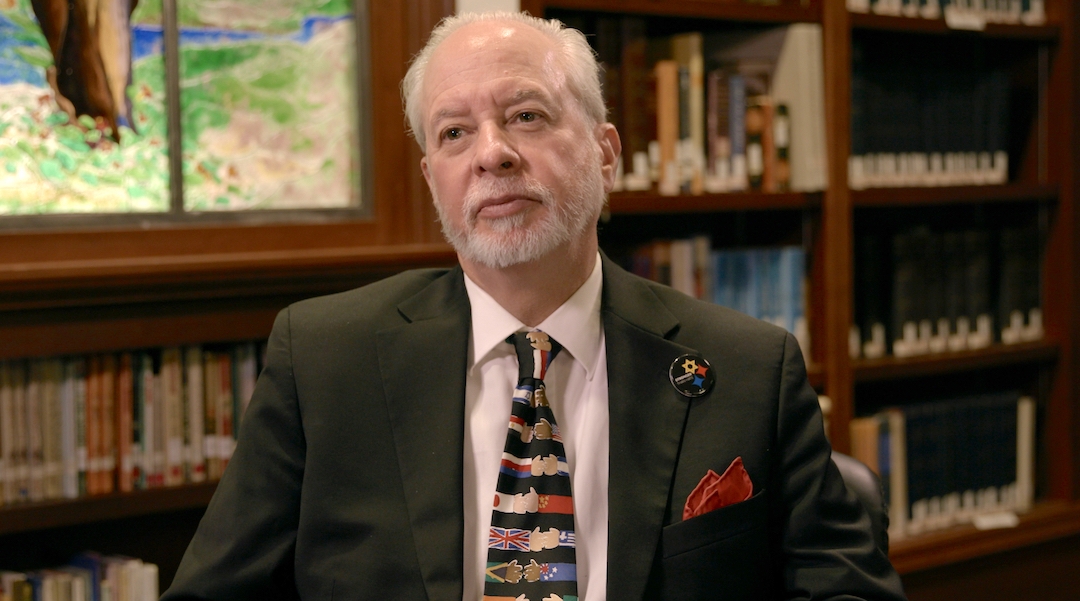(JTA) — In Pittsburgh, “10/27” has become a shorthand for the massacre, on Oct. 27, 2018, of 11 Jews as they gathered for worship at the Tree of Life synagogue complex in the city’s Squirrel Hill neighborhood. The nonprofit that is coordinating this year’s events marking the five-year anniversary of the shooting is known as the 10.27 Healing Partnership.
But that anniversary arrives as the Jewish world staggers under the weight of another date — Oct. 7, 2023 — when Hamas launched an attack that killed 1,400 Israelis in a day and pulled Israel into a war aimed at the group’s eradication.
For Rabbi Jeffrey Myers, rabbi of Tree of Life/Or L’Simcha Congregation and a survivor of the attack, the two events defy easy comparison. And yet, he said in an interview this week, the catastrophe in Israel compounded the trauma in a Pittsburgh community that was hoping this anniversary — which followed a guilty verdict and death sentence for the gunman in a trial that ended in August — would bring some degree of closure for the survivors, grieving relatives and the community at large.
Myers, in his first pulpit as rabbi after serving for years as a cantor, had come to Pittsburgh just a year before the shooting to lead a Conservative synagogue in a space shared with two other congregations, New Light and Dor Hadash.
He was just beginning Shabbat services that Saturday in 2018 when he heard a loud bang. When he realized it was a gunshot, he pushed three congregants into a supply closet and told others to drop to the floor. He managed to call 911 from up in the choir loft, and, seeing there was nothing else he could do for others in the building, barricaded himself in a bathroom.
By the time police subdued the gunman, he had killed 11 worshippers: Joyce Fienberg, Richard Gottfried, Rose Mallinger, Jerry Rabinowitz, Cecil Rosenthal, David Rosenthal, Bernice Simon, Sylvan Simon, Dan Stein, Irving Younger and Melvin Wax.
Myers became the public face of the worst antisemitic attack in U.S. history, and a spokesman for the commemorative efforts that have followed since. While the congregations worship elsewhere, the architect Daniel Libeskind has been hired to design a renovated complex that will eventually house a sanctuary, a museum, a memorial to the victims and a center for fighting antisemitism. (Dor Hadash and New Light plan to stay in their new locations.)
A month of anniversary events that culminated Friday, Oct. 27, with a commemorative recent event in Pittsburgh’s Schenley Park.
Myers and I spoke as Israelis continued to hold funerals and shivas for their dead and clamored for the release of the more than 200 people being held hostage by Hamas. We spoke about the impulse toward vengeance, his approach to fighting antisemitism and how to promote a positive vision of Judaism in a climate of fear.
“Despite all the ugliness I still have hope,” he told me. “I’m a hopeful person, despite all I’ve been through. I’m convinced there are more good people in the world than not. We just need that silent majority to become a vocal majority. But I have hope that we are capable of better.”
Our conversation was edited for length and clarity.
JTA: The fifth anniversary of the shooting is coinciding with these terrible, terrible events in Israel. I think in an interview you used the term “retraumatizing” to describe its effects on you and your community.
Myers: I don’t think the word necessarily exists in the English language, but I think it’s just the best descriptor of the whole concept of compound trauma for one thing and you have the next one piled right on top of it. It’s the same physical and emotional feelings. Except hopefully, this time, having been through it, you’ve developed the tools necessary to be able to make it manageable.
What are some of those tools? Because I know right now people are just struggling, whether they’ve lost family, or friends of friends, or just processing the loss of so many Jews in a single day.
I have to say that I’m not a mental health professional. So I always encourage people to reach out to the right professionals. The things I recommend to people is, first off, to recognize that you do have those symptoms again, to be mindful of your body. What is your body telling you? Finding time for self-care is so critically important. Figure out some way to get sufficient rest. That’s not always easy because the brain doesn’t want to shut off. Make sure you eat, make sure you stay well hydrated, buy time every day for a timeout to see if there’s space to do something you’d like to do. For example, at this time of year for the Northeast, if you look for leaves, set aside an hour if you can take a drive. Just bring a chair and just take in the beauty of the leaves. When you have a lunch break, make it a lunch break.
Have you taken your own advice? What have you found particularly helpful over these five years?
All of those things. You know, put down the electronic leash and just don’t use it. Take a break. That’s what voicemail is for. And just stepping away from demands and just easing off the proverbial gas pedal for a little bit. Take time out for myself. Because I’m no good to my congregation at large if I’m not my optimum self.
You described the years waiting for the start of the trial as being “stuck in neutral.” You wrote, “It was a challenge to move forward with the looming specter of a murder trial.” Now that there is a verdict and a sentence, are you seeing a way forward?
The best way to describe it is the Greek myth of Sisyphus [doomed to roll a boulder up a hill without ever reaching the top]. And the most important thing is just get out of the way. When it comes running back down the hill, make sure it doesn’t run you over. The reminders are constant: Tree of Life is mentioned every day somewhere in print, every single day. Because we are the poster child for antisemitism in the United States.
And when Tree of Life reopens it will be more than a synagogue — it will be a symbol. How do you lead a community in that circumstance?
Just the fact that it opens will be an important statement to the entire Jewish community, the United States and beyond that we didn’t let evil win. It took a lot longer than we wanted [to rebuild]. We want to be in our building yesterday. But that being said, it will be a powerful symbol. There’s the beauty of Daniel Libeskind’s design, but to me more importantly is what emanates from the building in terms of who we are. What are the things that we do? Where are we focused?

A rendition of architect Daniel Libeskind’s plans for the interior of the new Tree of Life synagogue. (Tree of Life)
Your community has launched a national nonprofit organization dedicated to uprooting antisemitism. What will make its approach different from other organizations working in this sphere?
It’s about identifying one’s niche. You’ve got these two massive legacy institutions, the Anti-Defamation League and the American Jewish Committee, and all of these popup organizations doing also wonderful work. But frankly, there is a lot of duplication going on in organizations. What can we add to the conversation? We have the site. We have the story. We have the testimonies of survivors. That’s impactful. And to that end, that’s something that we can use carefully with the school children to teach them the story, not just of antisemitism but that it doesn’t end with the Jews. We can have schoolchildren come to us for a fulsome experience, not to leave depressed but to be able to leave saying, “What’s an action that we can take back to our community in our own way to further the goals of Tree of Life, to eliminate antisemitism, and to have respect for all of humanity?” With all due respect to all of these other wonderful organizations, they don’t have the capacity to do that in the way that we do.
I think some people might look at Tree of Life and come to another conclusion: That Jews aren’t safe, and all the money that synagogues have had to spend on security in recent years contradicts the message — and it is right in the name of the synagogue — that Judaism is life-affirming. Do you worry about that?
Really good question. I think of that when I go to other houses of worship, and recognize so many that don’t have security, and think that they’re immune from bad actors who will physically do terrible things for unexpected reasons. But whatever the reasons are, the sanctuary that existed in America’s houses of worship no longer exists. It’s a fiction. Our responsibility is to provide that balance between being open and welcoming, and yet safe and secure. That’s a really hard balance.
And that’s why we’re working with professionals to create the right balance, so that I don’t feel like I’m going through TSA to get into Tree of Life, but that people know we’re mindful that these are the realities. One shooter demanded a wholesale change across the entire American landscape for synagogues, and that’s the reality. So we have to be a model of how can you do that in an intelligent, non-threatening way.
But are there people who come to you and say, “Rabbi, I am trying to have a positive Jewish experience in my life, but I see what happened here. I see what’s happening in Israel, and I can’t get past the fear and towards something” (again, I’ll use that term) “life-affirming”? How do you respond?
It’s not fictitious. There are people afraid to come. That’s another reason to have livestreaming. We can say, “We care about you. And we’re going to do our best to use technology to provide ways for you to stay connected in a way that you feel safe. And we’re hopeful that as time goes on you can find ways to [overcome your fears].” But that’s what it means to be a domestic terror victim. And to that extent, I would submit that the entire Jewish community in the United States are victims of domestic terrorism on an ongoing basis.
Part of my answer has regularly been that the more antisemitism they do, the more Jewish we must do. There’s a vibrancy through community. No matter what the setting may be, whether it’s a joyous occasion, whether it’s a sad occasion, there’s something about the energy that you get when you’re in community. We recognize that as we began to come out of COVID. What’s the first thing people did? People missed hugging, that interpersonal connection that being on a screen does not provide. So there are ways to provide for safe gatherings, to just be in community with each other and those are important. And those we continue to do, whether it’s religious services, which is the primary function of a synagogue, or social gatherings, cultural gatherings, educational gatherings. Those are the things that we must continue to do and do even more of because if we don’t, then we give into that terrorism, and then the terrorists win. And I’m not doing that on my watch.
I want to take you back to the trial. I think a lot of the reporting talked about how the guilty verdict and the death penalty would bring “closure.” Did you experience it that way?
There’s no one answer, frankly. A verdict can’t bring back your loved ones. So I don’t know if closure is the right word. Perhaps the best way to describe it is that a chapter ended. We flipped the page in this book that we’re writing. And, as has always been the case, the next page is totally blank. We’re now writing that next chapter. Now we can begin to move forward and really begin to explore what healing looks like. Because I don’t know we can really get “closure” in the way that I think people would want.
Right, you certainly can’t bring the loved ones back or erase what you experienced that day.
The reminders are there at any given moment. Your brain will replay the video that seared in your head of the day. And it’s not just say, Oct. 27 at precisely 9:54 a.m. when the video clicks on in my head every year. It can be at any given moment. Sometimes it’ll just start to play and you can’t shut it off. And that’s what it means to be a survivor. You have to learn to live with those things. I’ve got to go with it and let it play and get through it.
I know so many people right now who are thinking about vengeance, because 1,400 Israelis are gone in a moment as the result of acts of unbelievable brutality. And I think it’d be natural for anyone to want to seek vengeance. Have the last five years made you think about vengeance and both its uses and its abuses?
When we try to seek vengeance, we lower ourselves to the same level as the perpetrator. And then we’re no better than the perpetrator. And it’s not a holier-than-thou attitude — it’s more that I become a victim in another sense, because it changes the biochemistry of who I am. And I refuse to let that happen. I’m not going to let the perpetrator make me then become another victim. So I recognize the mission that’s been foisted upon me because of this. And that’s where I focus my attention. Vengeance has never entered into it. I can see why people could be prone to that. I totally understand. It’s a natural response, to give yourself the space to cope with the horror, the anger, all of the emotions of it and to rush to that sort of judgment with potential regret later.
But it saddens me when I see people who respond in a comparable dangerous, violent way, because that doesn’t solve anything. Just as one mitzvah causes another mitzvah, one sin causes another sin. The initial feeling might be one of delight, but give it a little time further and you’ll discover there’s more regret than there was delight for going down that path. So I made the choice long ago. No, I’m not going to carry that anger with me, because it’ll overwhelm you and it can destroy you and I’m not going to let that happen to me.

Mourners visit the memorial outside the Tree of Life Synagogue, Oct. 31, 2018, in Pittsburgh, Pennsylvania, four days after 11 Jewish worshippers were killed during services there. (Jeff Swensen/Getty Images)
I saw a tweet, and it’s so different it’s almost hard to compare the two, but someone said that what happened in Israel on Oct. 7 was like Tree of Life times 100. Have you been talking to folks in Israel or people in your congregation about how to process what just happened, and do you worry about the wrong messages that might come out of a traumatic event like the Hamas attacks — perhaps calls for vengeance?
When we try to name something that’s unnamable and unexplainable, we frequently try to find the right comparison. Which is why you’ve heard language such as the Hamas attacks being the single greatest loss of Jewish life since the Holocaust, to try to put it in some term that people can understand. It’s very easy for us to expand on that and just [hate] all Muslims and all Arabs. And I’ve been praying to God: “Please don’t let me go down that path.”
I don’t think what happened in Israel could be compared to Tree of Life. Yes, they’re both about the threat of antisemitism. But [what happened in Israel] is far more than just that. You’re talking about an existential threat to the existence of a country.
As a rabbi, as a Jew, I pray that God should inspire and impart divine wisdom upon all those in the right leadership capacities in Israel, to make good, smart choices. That’s far beyond my skill set to figure out what those would be.
Anniversaries are meaningful but also somewhat arbitrary. Do you worry that the lessons or memories of what happened on Oct. 27 will fade over time or, as we’ve seen in the past few weeks, be overshadowed or subsumed by tragedies that seem even bigger or just more recent?
The past two years I’ve been privileged to participate in the Flight 93 memorial service on 9/11, because the flight 93 memorial is in Shanksville, which is an hour east of Pittsburgh. Over time, the observance has lessened and lessened and lessened. That’s just human nature. It’s how we cope with a trauma like that. I expect the same thing to happen when it comes to the 10/27 commemoration. Those who hold it most dear will continue to observe it in whatever personal ways they can, but there’s a gradual lessening of observance. It saddens me, but it’s what I would expect, having seen it in so many other circumstances.
You experienced something perhaps no other rabbi has had to go through in the modern era. What don’t outsiders understand about the shooting or its impact on you personally, or as a community? What would you want every synagogue rabbi or synagogue president to know based on your experience?
Be prepared. Take those trainings seriously. Because you may be called upon to save a life. Be direct with your congregants in terms of how they need to respond to this. God willing, you never need to use CPR, but you take the course because one day perhaps you might.
Because, as Rabbi Marvin Hier of the Simon Wiesenthal Center said to me, if [Nazi hunter] Simon Wiesenthal was alive today, his response to the shooting at Tree of Life would have been, “What took so long?” Because that’s the nature of America. We have something like 12 mass shootings per week in the United States.
What do you think is the most proper, the most appropriate way for people to take a pause and remember an event like 10/27?
It’s complex in a different way. For the Pittsburgh Jewish community, it’s the only event that’s observed twice: a solar date [on the standard calendar] and a lunar date [on the Jewish calendar]. There’s a heaviness to it because we get through the public commemoration, then there’s the yahrzeit [22 Heshvan, which fell this year on Oct. 22]. The public commemoration is really important because it’s not solely about an attack upon three congregations in one building. For so many Pittsburghers, it was an attack upon Pittsburgh. So many took it personally. It’s about all of Pittsburgh and how we come together.
But in the end I think our Jewish tradition is just so beautiful and powerful: We gather, we pray together, we say Kaddish together. But when the entire community says Kaddish together, and you get to the lines where the congregation usually says “amen,” there’s nobody to say “amen” because we’re all mourners. To me that’s that incredible.
JTA has documented Jewish history in real-time for over a century. Keep our journalism strong by joining us in supporting independent, award-winning reporting.







